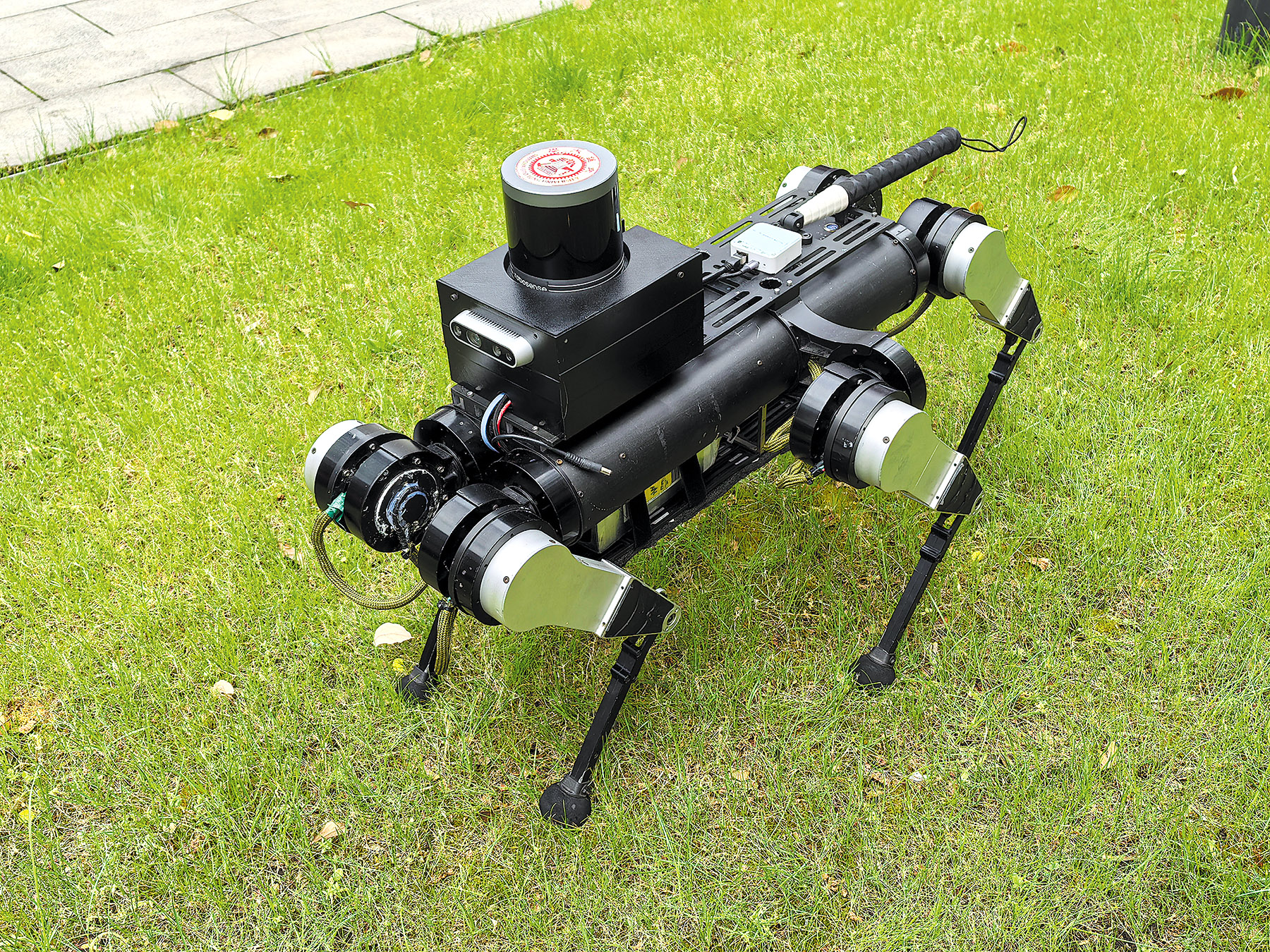
In addition to applying for a traditional guide dog, the visually impaired will soon have another option to assist with their daily life — a robot guide dog.
The six-legged robot guide dog developed by the School of Mechanical Engineering of Shanghai Jiao Tong University, now being tested, can navigate users to destinations without running into barriers. It is also equipped with voice interaction capabilities and can recognize traffic light signals, which traditional guide dogs cannot do.
According to data from the China Association of Persons with Visual Disabilities, there are currently about 17.31 million visually impaired people in China. They face diverse inconveniences and demand assistance for daily chores and errands.
READ MORE: Six-legged robot to guide blind people
Guide dogs are important life partners but not everyone is lucky enough to have a traditional companion.
"There are only about 400 guide dogs in China. People have to wait for a long time after applying for a guide dog. The cost of training the dogs is very high too, let alone the continuous daily cost for users. This can be another burden for the visually impaired," says Gao Feng, a professor and head of the research development team at the university.
Zhang Zhaohua, a braille proofreader based in Beijing, is among the lucky ones but has gone a long way to receive her first guide dog.
"There is a long queue after applying. My application for the first guide dog had me waiting several years. I had given up (the application) once during the waiting period until one of my friends, who got a guide dog in 2015 and felt the benefits, encouraged me to try again," recalls Zhang.
For those finding difficulty in receiving a guide dog, like 41-year-old massage therapist Li Fei in Shanghai, independent trips can be quite difficult, relying on assistance from their family members and volunteers.
Defined as a type of navigation robot, research in robot guide dogs dates back to June 2021, when the robots were developed and expected to serve the visually impaired in daily trips and travel at the 2022 Beijing Winter Olympics, according to Gao.
Gao points out that with six legs, the robot guide dog can walk smoothly with high stability and low noise, which is critical and friendly to the operators. With cameras, sensors and artificial intelligence technologies, the robot dog can see, listen and speak with operators for daily journeys outside and be a companion at home. Moreover, operators can use a cane to control the walking and running speed of the robot.
"China's walking robots are developing rapidly. Their basic components can now be produced at good quality and a low price. We see the timing of (the robot guide dog) industrialization has come and we can mass-produce them based on market demand," says Gao.
He also indicates that the team is cooperating with companies and expects to roll out a batch of probationary robot guide dogs by the end of this year, which is good news for the visually impaired.
The robot dogs are improving based on field test feedback. Both Zhang and Li have an upbeat attitude.
ALSO READ: Paws for empowerment
Li, who has participated in the field test, says she felt "surprised" by the robot dog: "The research teams are thoughtful and considerate, and are continuously making updates. As the robot dog is electronic, it will make it easier to get into public places than with traditional guide dogs… I am pleased to join the test as such high technology is likely to change our lives in the near future.
"I will probably try the robot guide dog (when it becomes available). Robots can be very precise and reliable as they seldom make subjective mistakes," says Zhang.
It is worth noting that the research team is looking to apply the robot guide dog in more areas. For instance, the robot can also guide and accompany people with Alzheimer's disease, in which the team sees great future demand and potential, according to Gao.
Contact the writers at wangxin2@chinadaily.com.cn]


